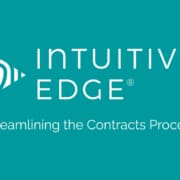2025 Year-in-Review: What This Year Taught Us About M&A, Leadership, Blockchain & the Future of Work

2025 was a year of clarity.
A year where integration leaders started saying out loud what many have felt privately for years: post-deal success isn’t about the slide deck — it’s about the operators who show up on Day 1 and actually build the new company.
Across dozens of conversations on M&A+ The Art After the Deal, we broke down what really drives value in transition, what derails integrations, and why the industry is undergoing a shift toward practicality, intelligence, and human-centered leadership.
This year’s guests—operators, legal experts, procurement strategists, technology innovators, and blockchain leaders—revealed a shared theme:
M&A is entering a new era: faster deals, more carve-outs, higher complexity, and a rising convergence between traditional corporate integration and emerging digital-asset infrastructure.
Here are the key learnings of 2025.
1. Integration Is Not Project Management — It’s Architecture
One of the biggest takeaways from this year is that integration leaders are no longer simply “project managing” a deal. They are architecting a new operating model while stabilizing the old one.
Guests like Aaron Mikulsky and Don Yakulis emphasized that true integration requires:
- Real sequencing, not wishful timelines
- A foundation built before acceleration
- The ability to see both the entire company and the interdependencies that define it
The message was clear: checklists don’t integrate companies — people who can anticipate consequences do.
2. Carve-outs Are the New Normal — and They Demand a Different Skillset
With mega-firms and private equity increasing carve-outs in 2025, we saw a surge in:
- Transition Services Agreements (TSAs)
- Standalone readiness efforts
- Operational disentanglement
- Regulatory and data-privacy complexity
Our discussions revealed that carve-outs succeed only when someone owns the messy middle—contracts, data, legal, procurement, back office, and the invisible systems most companies underestimate.
This is where the industry’s top operators shine.
3. The Future of M&A Belongs to Operators, Not Theorists
Several guests, from Visa to Microsoft to PayPal to SAP veterans, reiterated that the era of over-engineered frameworks is fading.
What’s replacing it?
- Hands-on execution.
- Honest risk assessment.
- Clear decision rights.
- Rapid problem solving.
A recurring insight:
Integration is a human sport. The people who can calm chaos, align teams, and push decisions forward are the ones who create real value.
4. Value Creation Is Shifting Toward Long-Tail Operational Excellence
This year reinforced that the real value isn’t captured in the first 100 days. It’s captured in:
- Contract optimization
- Procurement strategy
- Data privacy and security hygiene
- Vendor consolidation
- Workforce integration
- Operational modernization
In other words: what happens after the deal closes matters more than the deal itself.
This has been the biggest shift in private equity expectations in 2025.
5. AI Is Quietly Transforming M&A Behind the Scenes
This was the year AI went from “interesting” to “operationally essential.”
Our guests highlighted how AI now accelerates:
- Contract analytics
- Pre-integration discovery
- TSA assessment
- Clause extraction
- Cross-functional risk modeling
- Due diligence insights
But we also heard the caution:
AI is a multiplier — not a replacement.
It enhances great operators; it cannot compensate for weak ones.
6. Leadership in M&A Requires Humility, Strength, and Self-Reflection
Unexpectedly, this was one of the strongest themes across nearly every conversation.
Whether discussing talent retention, navigating fear during transitions, or managing cross-functional conflict, our guests acknowledged:
- Great leaders over-communicate
- They admit what they don’t know
- They lead with steadiness, not ego
- They elevate people’s strengths rather than force conformity
2025 reminded us that integrations don’t fail for technical reasons — they fail for human ones.
7. Crypto, Blockchain & the New Digital Frontier Are Reshaping M&A
This year also marked a pivotal turn toward the digitization of value, bringing crypto and blockchain out of the fringe and squarely into mainstream M&A conversations.
Episodes featuring blockchain leaders and policy experts revealed:
- Tokenization is coming to contracts, vendors, assets, invoices, and supply chains.
- Smart contracts will eventually reduce the operational drag of traditional TSAs.
- On-chain auditability is set to transform compliance and risk tracking.
- Digital custody and treasury strategy are becoming essential conversations for enterprises and portfolio companies.
- Private equity firms are exploring blockchain-based operational efficiencies they can apply across their portfolios.
A key takeaway:
We are entering an era where legacy systems and emerging decentralized systems will coexist — and M&A operators will need fluency in both.
This is not a crypto story.
This is a corporate modernity story.
2025 was the first year M&A leaders openly acknowledged that blockchain isn’t speculative — it’s inevitable.
8. The Industry Is Getting Faster — and More Human
Deals are closing faster. Transitions are compressing. Expectations are rising.
But something else is happening too:
Leaders are becoming more open, more candid, and more willing to share what actually works.
Our conversations this year captured a turning point — a shift toward community, transparency, and collaboration across companies, regions, and industries.
2025 was the year M&A became more human.
2025 Episode List + Links
From Resilience to Leadership: Ivan Golubic on Bridging Gaps in M&A
Guest: Ivan Golubic. He has worked across several large companies: previously in corporate-development / M&A roles at Goodyear Tire & Rubber Company, and also earlier in his career at companies like Whirlpool Corporation, Deloitte, and Ford Motor Company. Ivan shares how his career across finance, operations, and cross-border dealmaking shaped his philosophy of resilience in leadership. He breaks down how M&A leaders can bridge cultural, strategic, and communication gaps—especially in high-stakes integrations. The episode emphasizes people-first transformation during periods of intense change.
From Chaos to Clarity: Best Practices in M&A Integration
Guest: Don Yakuilis is a Global M&A Integration Executive Leader and has worked at corporations such as Light and Wonder, Visa and SAP. He has also provided M&A consulting services at KPMG. This episode distills best practices for turning messy or fast-moving acquisitions into structured, successful integrations. You cover alignment, early decision-making, communications discipline, and how leaders can create clarity for teams when timelines and information are uncertain.
Tech, Transformation & M&A: Lessons in Execution with Michael Richards
Guest: Michael Richards. Michael is a transformational leader with deep expertise in private equity, technology, and software. His background includes senior leadership roles (CFO, COO, Chief Transformation Officer at major firms including Symphony Technology Group. In this episode, Michael discusses the intersection of technology transformation and M&A execution—what actually derails integrations and what enables them to succeed. He shares lessons from working with complex systems, global teams, and large-scale change programs, highlighting how tech strategy must support the business narrative of the deal.
M&A Moves That Matter: Leading with Questions in Times of Change with Bob Tiede
Guest: Bob Tiede. Bob Tiede is a leadership expert and author, known for his work on effective leadership through questioning. Publications include “Great Leaders Ask Questions” and “Now That’s a Great Question”. In this episode, Bob introduces his signature “Leading with Questions” framework and applies it to M&A environments. He explains how curiosity-driven leadership improves trust, reduces resistance, and accelerates alignment during restructurings, integrations, or major organizational shifts.
Decision-Ready Boards, Growth Mindset, and the Fog of Change – with Tom Doorley
Guest: Tom Doorley. Tom Doorley is founder of Sage Partners and co-founder of Braxton Associates. He is a long-time advisor to boards and large companies. Tom breaks down how boards and executives can stay “decision-ready” when faced with incomplete data, shifting markets, and organizational fog. He also explores growth mindset as a practical tool for leaders navigating disruptive change, M&A pipelines, and strategic pivots.
Crypto’s Next Frontier: Policy, Power & M&A with Lee Bratcher
Guest: Lee Bratcher. Lee is the Founder and President of Texas Blockchain Council (TBC). Under his leadership, the TBC counts 75+ member companies and has been influential in shaping blockchain and crypto-related policy and regulation in Texas. Lee also serves as a Captain in the U.S. Army Reserves, working as a “Tech Scout” for the 75th Innovation Command. Lee explores the rapidly evolving crypto landscape—from state-level policy initiatives to national regulatory pressures. He explains how these forces are shaping the next generation of digital-asset M&A, and why institutions are moving from experimentation into strategic acquisition.
From Tax Partner to Bitcoin Builder: Tim Savage on Value Creation Post-M&A
Guest: Tim Savage. Tim Savage is a CPA and Tax Partner at Weaver, where he leads the firm’s Blockchain & Digital Assets practice. In this role, he works at the intersection of tax, crypto, and M&A, reflecting a shift from traditional tax practice into digital-asset tax advisory. Tim discusses his shift from a traditional tax career into the Bitcoin and digital-asset ecosystem. He highlights how value creation principles apply to post-merger environments in this sector, including governance, capital allocation, and the challenges of scaling emerging-technology businesses.
From DOJ to Digital Assets: Joshua Smeltzer on Deals, Courts & Crypto
Guest: Joshua Smeltzer. Joshua Smeltzer is a Texas-based attorney specializing in tax and digital assets. He is currently a partner at Gray Reed law firm. Publicly he writes about crypto, taxation and regulatory issues, often for outlets like Forbes. Joshua shares how his background at the U.S. Department of Justice informs his work in the digital-asset and crypto legal space. He examines regulatory enforcement, litigation risk, and how these realities shape dealmaking, valuations, and structuring in crypto-focused acquisitions.
AI, Law & the Deal: Rob Taylor on Risk, IP, and Post-Merger Reality
Guest: Rob Taylor. Rob is a tech-lawyer focused on AI, IP, risk and post-merger legal reality. He is currently Of Counsel at Carstens, Allen and Gourley and a co-founder of NXTsolve. Rob dives into the legal and IP complexities emerging at the intersection of AI and M&A. He unpacks risk management, data rights, and the IP pitfalls that often surface only after a merger closes. The episode blends AI practicality with post-deal legal realities.
Closing Message
As we look toward 2026, the mission of M&A+ The Art After the Deal remains clear:
- Make the invisible work visible.
- Elevate the operators.
- Lean into the future — including blockchain, digital assets, and AI.
- Show how real integration gets done.
Thank you for being part of this journey — and for pushing the industry forward with me.
Here’s to another year of clarity, execution, innovation, and value creation.
— Lisa Scott
CEO, In2edge
Host, M&A+ The Art After the Deal








 In the high-stakes world of private equity (PE), the strategic management of procurement agreements and contract data across portfolio companies can significantly influence overall investment success. Yet, the extent to which PE firms are harnessing this potential varies widely, with some firms leading the charge in strategic procurement management, while others are yet to tap into this reservoir of value.
In the high-stakes world of private equity (PE), the strategic management of procurement agreements and contract data across portfolio companies can significantly influence overall investment success. Yet, the extent to which PE firms are harnessing this potential varies widely, with some firms leading the charge in strategic procurement management, while others are yet to tap into this reservoir of value.

